
355 OCTOBER 2024




355 OCTOBER 2024


“We travel, some of us forever, to seek other states, other lives, other souls.” ANAÏS NIN
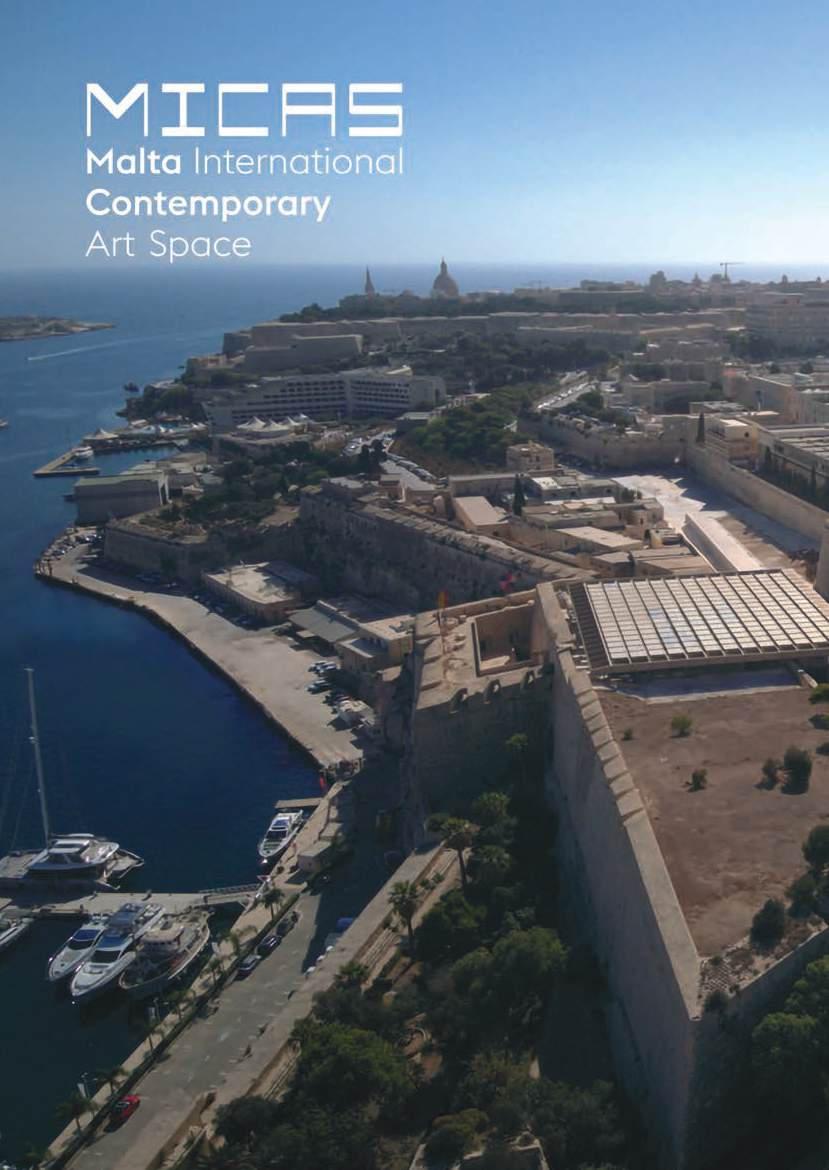


“The
possession of knowledge does not kill the sense of wonder and mystery. There is always more mystery.”
ANAÏS NIN

“The energy you give off based on your beliefs... your emotions... your behavior... the vibrational frequency you give off is what determines the kind of reality experience you have... because physical reality doesn't exist except as a reflection of what you most strongly believe is true for you. That is all that physical reality is. It is literally like a mirror.”
SOLUSTRANCE (N.) The feeling of inspiration and glamour as a result of the comforting radiance felt during golden hour. The word comes from a blend of the Latin “sol” (sun) and “trance,” suggesting a dreamy or meditative state caused by this glowing light.




ON THE COVER: Immaculate gardens at Villa d’Este, Cernobbio, Italy. Photography Bob Osias. THIS PAGE: The Trevi Fountain, Rome, designed by Italian architect Nicola Salvi and completed by Giuseppe Pannini in 1762. Photography Freeyork. CREATIVE DIRECTOR AND SALES MANAGER SEAN ELLUL SELLUL@INDEPENDENT.COM.MT DESIGNER CONRAD BONDIN CBONDIN@INDEPENDENT.COM.MT PRODUCTION MANAGER ANDRE CAMILLERI ACAMILLERI@INDEPENDENT.COM.MT PUBLISHER STANDARD

ERRATUM: FIRST MAGAZINE SEPTEMBER EDITION
FAITH, DIPLOMACY, AND LEADERSHIP
We regret to inform our readers that due to a technical error in our September issue, the final sentence of the article titled Navigating Faith,Diplomacy, and Leadership: Roberto Buontempo, was inadvertently cut off. To correct this, we are pleased to provide the missing concluding portion below for context.
Portrait photography Tonio Lombardi.
“Throughout my career, I’ve been fortunate to work alongside remarkable individuals who became my confidantes. These people came from diverse backgrounds, each appearing at pivotal moments in my journey. I’ve been incredibly lucky to encounter them just when I did. It’s important to acknowledge that without the support and belief of these individuals - many of whom continued to follow me - none of my achievements would have been possible. Another privilege was that of serving as a Councilor in Birkirkara during the 2006-2009 legislative term, an experience that allowed me to directly contribute to my community. Beyond my professional career, I have been deeply involved in the sports community in Malta, primarily as a top-tier football referee and progressing to roles such as Referee Observer, Mentor, and most recently, Chairman of the Referees


Disciplinary Unit of the Malta Football Association. While this journey has come with its share of challenges, each experience has imparted invaluable lessons that continue to shape my approach to every role I undertake. My lifelong passion for sports has instilled in me the importance of discipline, teamwork, and fair play. I am a firm believer in integrity and mentorship principles that I try to uphold in all aspects of my life.
We should always strive to improve and reach for greater achievements, no matter where we find ourselves in life. However, it’s equally important to remember that we need the input of others. Leading with confidence but not seeking to dominate has been my approach, and it’s one that I believe fosters true growth and collaboration.
All of this has been made possible thanks to the steadfast support of my wife, Josette, and our daughter, Filippa. They have been
my constant companions in every endeavor, and their love and encouragement have been my greatest source of strength. I am profoundly grateful for their presence in my life.
As I continue to navigate the complexities of my various roles, I remain committed to making a positive impact on the world around me. Whether in faith, business, or diplomacy, my journey has been one of ongoing growth, driven by a commitment to improvement and a dedication to serving others. This is what it means to lead with purpose, and I am grateful for every opportunity to do so.”
Thank you for your understanding, we appreciate your continued support of FIRST Magazine. We invite our readers to find the complete online version of the article by visiting issuu.com/themaltaindependent/docs/ first_sep_2024
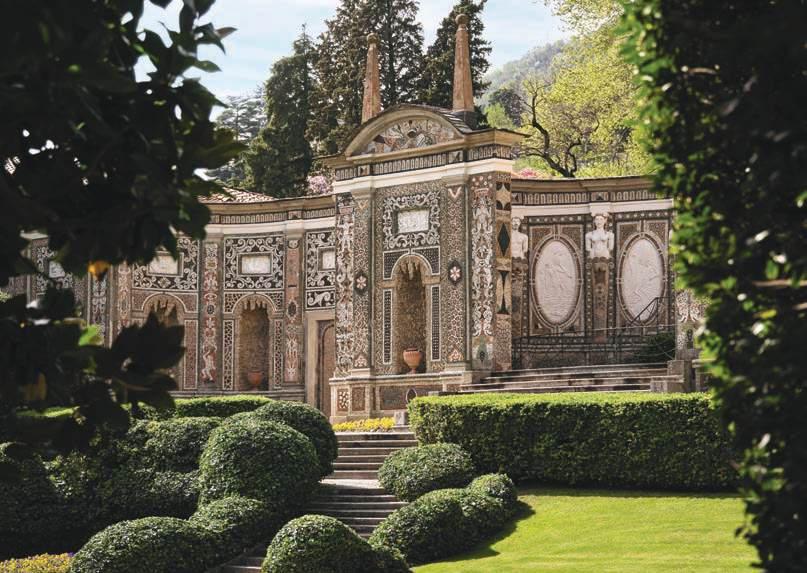
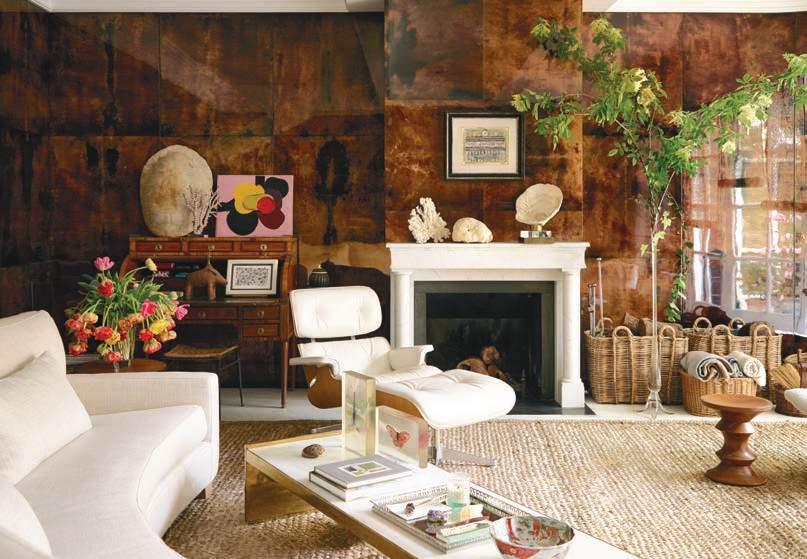

Unlocking The Orange Dream. Exceptional Handbags on Auction. Photo © Christie’s Images Limited.


10
LA DOLCE VITA. VILLA D‘ESTE.
A Legend on Lake Como.
22 INTERIORS
Town & Country. Spanish designer Isabel López-Quesada.
A Philosophy of Scent–Part 6. TheMetaphysicalNature ofThings and theOpenContingencies ofTime. AlookatCHANEL ALLURE EDPand CHANEL ALLURE HOMME EDT. 35
Unlocking The Orange Dream. Exceptional Handbags.
STRICKLAND HOUSE
Sophisticated Design meets Valletta’s 17th Century Streetscape.
PALAZZO LUCIA
A Historic Landmark Reimagined. 59 MELITENSIA
National Museum of Archaeology. Secrets Of The Gran Salon.
A Taste of Innovation. Heston Blumenthal and The Fat Duck.
The Sustainable Plate –Seasonal Eating. Green Architecture. Notes on Going Electric.
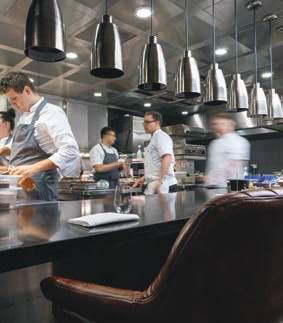
Our Continued Love Affair with the Aperol Spritz.
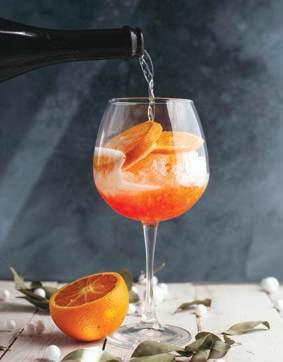


destination steeped in centuries of history and elegance. This stunning retreat has hosted emperors, aristocrats, and celebrities alike, earning its reputation as one of the most luxurious hotels in the world. Originally built in 1568 by Cardinal Tolomeo Gallio, the villa has passed through the hands of royalty, including Caroline of Brunswick, Princess of Wales and future Queen of England, who added her own English charm to its magnificent gardens. Today, Villa d’Este’s mix of Italian Baroque and Romantic landscaping styles continues to captivate visitors, offering a glimpse into a world of timeless beauty and refined luxury.
Photography courtesy Villa D'Este.



Villa d’Este, located in Cernobbio, is a masterpiece of exquisite design and breathtaking surroundings. Its history dates back to the 16th century, when the wealthy Cardinal Tolomeo Gallio commissioned the architect Pellegrino Pellegrini known as The Tibaldi, to build a sumptuous
villa overlooking the lake set to become one of his summer residences. It was considered one of the finest examples of architecture and landscaping at the time and its fame soon spread throughout Europe. In 1615 the villa, named Garrovo after the mountain stream that flows into the lake, was visited by the Sultan of Morocco with the sole purpose of seeing for himself the reported splendour.






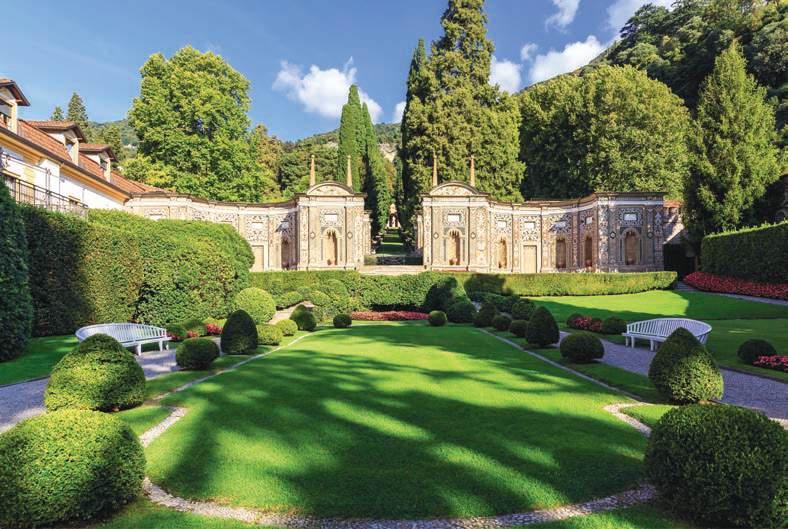
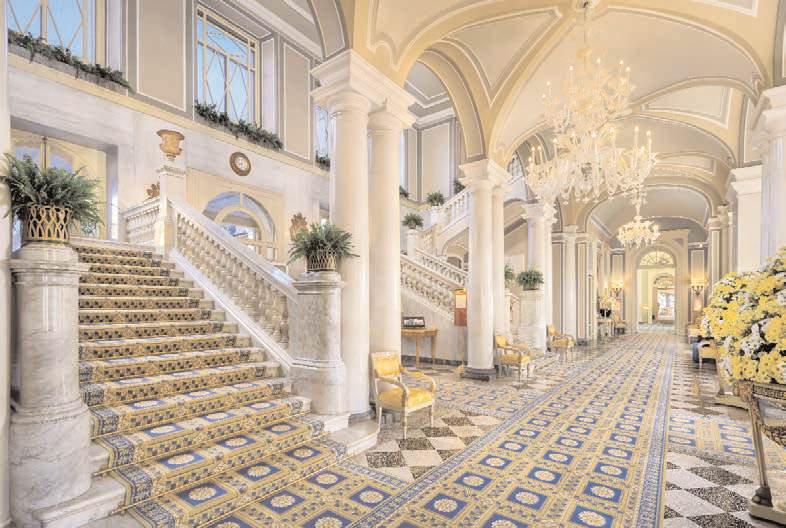

The villa remained in the Gallio family for over two centuries before passing into the hands of various eminent personalities.It was renamed Villa d’Este when Princess of Wales and future Queen of England Caroline of Brunswick, purchased the property in 1815 and added typically English, picturesque touches to the beauty of the Gardens. Villa d’Este was the residence of the Russian Empress Maria Feodorovna in 1868, before being transformed, together with the Queen’s Pavilion, into a luxury hotel in 1873. It soon become a favoured destination for the European elite and a popular stop on the Grand Tour, and the villa’s legendary status has only grown since then, becoming a favourite among the European aristocracy and modern-day celebrities alike.
Walking through the grand halls of Villa d’Este, one is transported to another era. The architecture, adorned with ornate frescoes, Murano chandeliers, and classical statues, reflects a timeless opulence. The surrounding 25 acres of landscaped gardens are a National Historical Monument, blendingdifferent styles – the Italian and the Picturesque, the Baroque and the Romantic. Among the treasures are the Temple of Telemachus, the Shepherd’s Arch, and the picturesque fortress, all surrounded by century-old trees, fountains, and meticulously manicured flowerbeds.
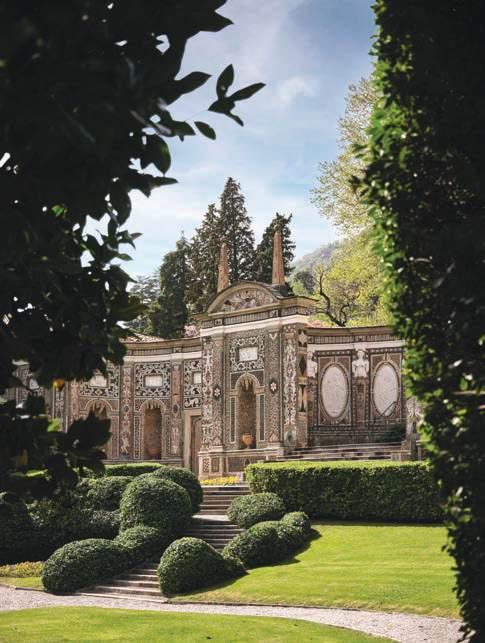
Top left: Closeup of the Nymphaeum, also called “the Mosaic” since it is decorated with myriads of polychrome pebbles. Above: Villa d’Este’s mix of Italian Baroque and Romantic landscaping styles offers a glimpse into a world of timeless beauty. Below: Among Villa d’Este’s landscaped gardens is the Chef’s Garden, where herbs and vegetables are grown for use in the hotel’s kitchens, ensuring the freshest ingredients for every meal.

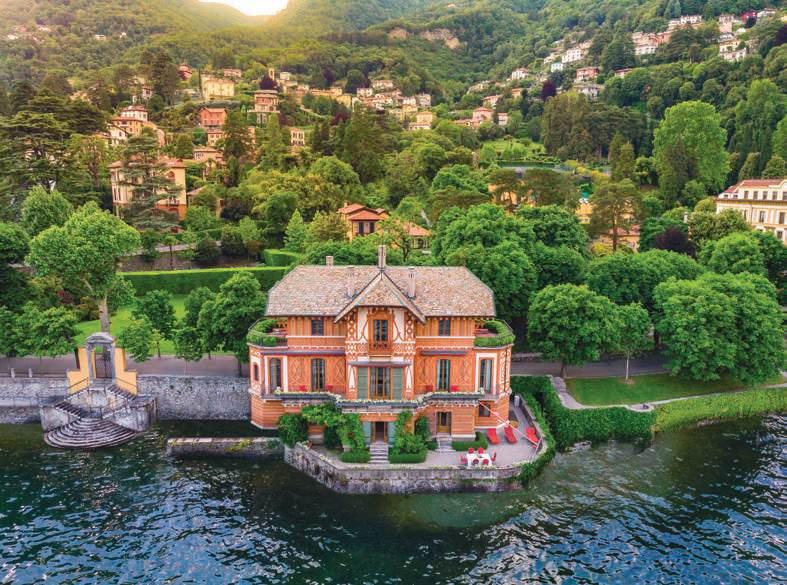
The gardens are part of the Grandi Giardini Italiani network, which preserves Italy’s most prestigious historic properties, and they reflect centuries of horticultural design, from the grandiose Italian style to the more intimate, naturalistic
English influence introduced by Caroline of Brunswick. Among these gardens is the Chef’s Garden, where herbs and vegetables are grown for use in the hotel’s renowned kitchens, ensuring the freshest ingredients for every meal.
The 152 rooms and suites, with views over the lake and the park, are divided between the
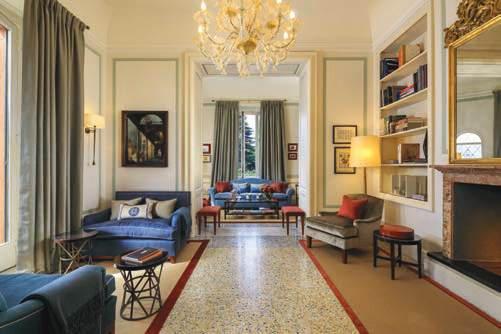
Cardinal Building and the Queen’s Pavilion. The rooms are refined and spacious, with period furniture, marble bathrooms, velvet and brocade fabrics... the atmosphere recalls old-time private residences. For a more intimate and independent stay, Villa d’Este offers four private villas, each designed to evoke the charm of patrician residences. Whether it’s Villa Cima by the lake, Villa Malakoff – a jewel dating back to the 19th century, Villa Garrovo with its private gym, or the Mosaic House, these spaces each provide a unique intimate escape.
Dining at Villa d’Este is an experience in itself, offering a perfect blend of elegance and Mediterranean charm. La Veranda is the hotel’s main restaurant and most elegant offering. It offers a magnificent panorama over the lake and its wide windows accentuate the impression of being immersed in the park. In the warmest months, the wonderful terrace is available for pieds dans l’eau dining. For a more relaxed atmosphere, The Grill serves offers typical Mediterranean dishes amidst the lush garden surroundings, while Il Platano, the most intimate of Villa d’Este’s restaurants, proposes creative Italian cuisine. Under the expert guidance of Executive Chef Michele Zambanini, each dish is a tribute to the villa’s legacy of refined indulgence.

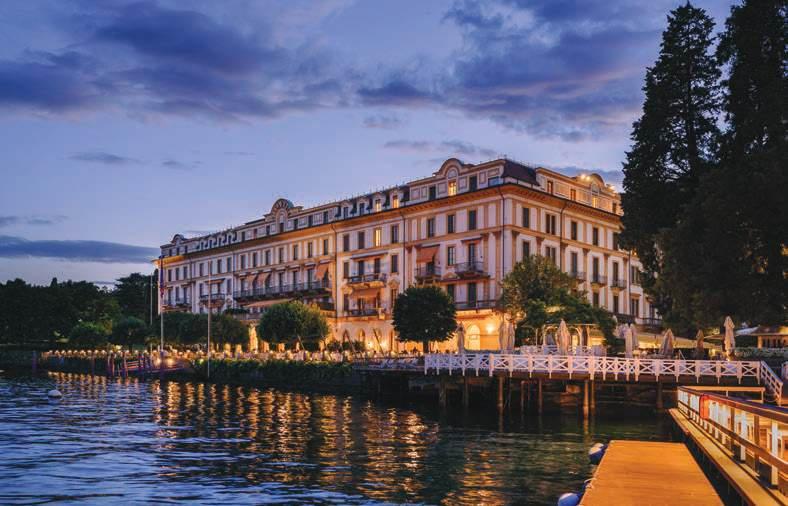


For those who wish to indulge in leisure and relaxation, Villa d’Este’s Sporting Club offers an array of activities, from tennis on one of the eight courts, to water sports such as sailing and kayaking. The iconic floating pool on the lake is a highlight, allowing guests to swim while taking in the breathtaking views. For those preferring a more tranquil experience, the Beauty Center provides an oasis of calm, with massages and treatments designed to rejuvenate both body and mind.



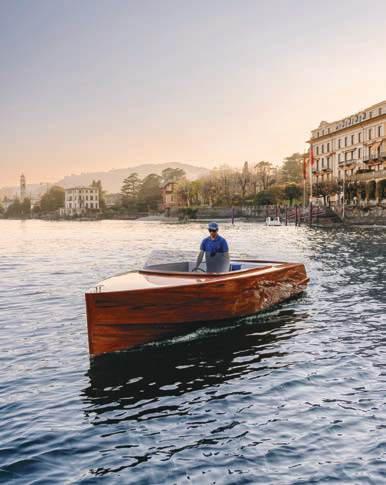
Villa d’Este also plays host to several exclusive events throughout the year including the annual Concorso d’Eleganza, one of the world’s most prestigious classic car shows, which brings together tradition and modernity in a celebration of automotive design and creativity.
With a rich history and luxurious offerings, Villa d’Este is a living Dolce Vita experience in the heart of one of Italy’s most beautiful regions. Its timeless elegance and enchanting surroundings make it a destination unlike any other– a true legend on Lake Como.



Isabel López-Quesada has been described as the most significant European woman designer working today, and her new book Town & Country, published by Vendome Press, demonstrates her interior design expertise. Showcasing a wide variety of her design projects, this superb monograph is divided into two sections, Town and Country, displaying spectacular residences located on three islands across the Mediterranean Sea, the Caribbean, and more. Innovatively combining period and contemporary furniture and art in a sophisticated, seemingly effortless mix, the interiors of Isabel López-Quesada are inspirational and unforgettable. Beautifully captured by renowned photographer Miguel Flores Vianna, her eye-catching designs and the skill with which she carefully places decorative objects among stunning furnishings are celebrated here.

“A house, like a person, should blend traditions and modernity. Why do a house in just one style? Being narrow-minded is not the message you want to pass on to your children.”
Isabel López-Quesada, Architectural Digest interview April 2012

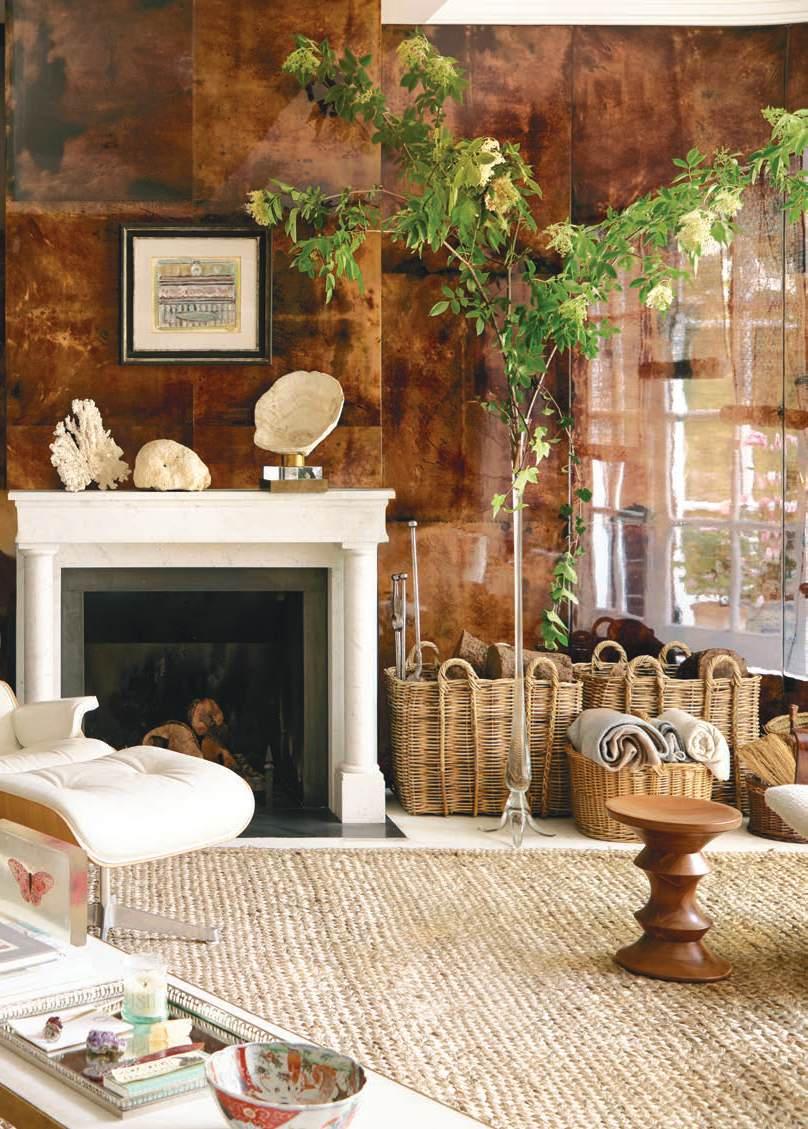
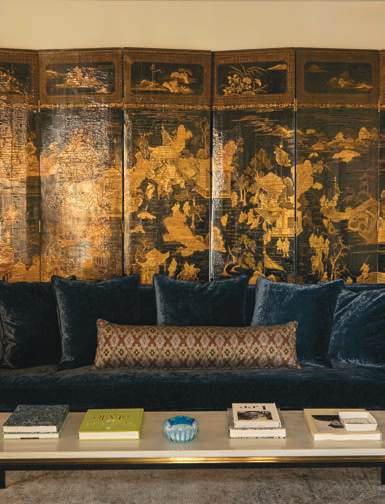

late-eighteenth-century
Isabel López-Quesada opened her first studio in Madrid at the age of 20. Her passion for interior design was precocious and self-taught, a vocation whose strength continues undiminished forty years later. While maintaining her base in Madrid, over this time, she has executed projects worldwide,
showcasing her ability to comprehend and enhance spaces of all kinds, imparting them with a unique character. Talent, professionalism, instinct, and years of experience distinguish her work, internationally recognized for its versatility and personal charisma. Beyond Spain, her projects extend across the globe to places such as the United States, the United Kingdom, France, Switzerland, Japan, and the Dominican Republic.

Left: A black floor-to-ceiling bookcase runs the length of the wall of this living room. The central section holds a seventeenth-century tortoiseshell mirror that has been passed down through the family. On the left is an eighteenth century horsehair bench from Sweden.



focal point of
photograph
from Daniel Buren, work in situ Guadalajara I, which hangs above the black velvet sofa. Two 1960s standing lamps and a coffee table, lounge chairs, and footstools from the same era sit on a large wool rug with a geometric pattern, all centered around the fireplace. Below left: With large French doors to the west and a sash window to the south, this dining room feels like a sunroom. The walls are covered with raffia, and the windows with straw blinds. The corner sofa, upholstered in striped English fabric, mirrors the shape of the courtyard bench. A painting by Günther Förg fills the wall space, and four eighteenth-century polychrome French Louis XVI chairs ensure there is seating for ten. Below right: In this kitchen, a painted wooden cabinet holds dinnerware, glassware, and silverware, with table linens stored in the bottom section. The kitchen table is solid French oak.
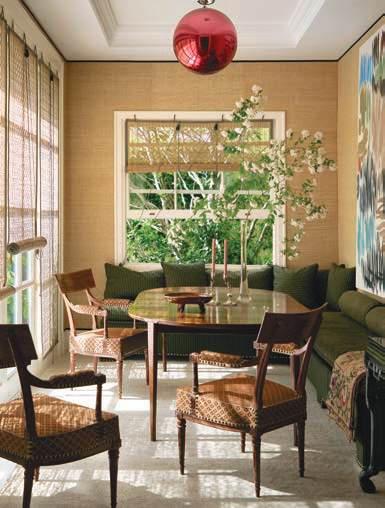
“It’s been six years since the publication of At Home, my previous book, which told the story of my home and studio in Madrid, Spain, and the farm in Biarritz, in southern France, where I go to escape. Its pages contained all the things that enrich my life and work, and that are considered characteristic of my style: my family, simple pleasures, flowers and plants, treasured books and objects, special furniture discovered trawling antique shops on my travels, and my obsession with natural fabrics and fibres,” writesIsabel López-Quesada, in the introduction to her new book Town & Country.
“This book features projects I’ve completed for others, my clients and friends and the people who accompany me day to day in this wonderful profession. Town & Country throws open the doors of some of the houses I’ve designed along with my studio in recent years. The book mostly features projects from the last twenty years: eight town houses and seven country houses that would not exist without their owners’ collaboration and trust.”



Above: This bathroom benefits from southern and eastern light. Brazilian gray-striped quartzite lines the area around the freestanding bath, shower, and toilet. An English bathtub sits between the window and the door and is adorned with gold American-style taps. Below: In this bathroom, an English tub is installed between the two patio doors for the best view. On the right is an antique French chair with mother-of-pearl detail, and on the left a tall blue vase catches the light and holds greenery.

“The fact that a Madrid-based studio has worked on international projects–from the United States to the Caribbean to Japan, and throughout Europe–is both a professional challenge and a matter of personal pride. The first response to each challenge is architectural, the search for a logical and elegant layout that alters spaces from the ground up. There’s the connection to the landscape to consider too– so fundamental to reinventing a place. To fully understand my work requires an understanding of my love of art, other cultures, and other landscapes. To travel is to learn: imagining an empty place demands an understanding of everything that’s possible in terms of different ways of living. I always say that designing a house is like staring at a blank page, and my first step to dealing with this unwritten story is to bombard my clients with thousands of questions. I need to know everything about them, their lives, and their wishes. That’s how I write the first paragraph of every great tale.”
“Finding the spirit of a location, understanding it, and making it your own is no easy task. Neither is communicating my ideas to all the trades involved to create a house that embodies my vision. I take nothing for granted and treat each of my designs as carefully as if it were my first. I love my work and I believe my enthusiasm is contagious, so I never feel fearful of working on projects far from Spain. After four decades, I trust my instinct and experience.”
“Each house in this book can be seen as a discovery– of a place, a family, a couple, a certain climate, a new craft. Obviously, all my houses feature common elements, invisible threads I weave that capture my taste and my idea of what makes a home special. I advocate for what I call “tranquil décor” or silent luxury, an expression that rejects the obvious and expresses my belief that beauty and comfort are entwined. Houses are for using and enjoying, to be lived in with others, to experience joy and happiness and– when we need it– calm and seclusion. This is why I believe more in harmonious elegance than in attention-seeking excess.”
“To look through this book is to enter a world of dreams and an endeavour to make different ideals into a reality... Today, from my new house, surrounded by my books and objects and all the things that I truly love, I continue to dream of new spaces, materials, shapes, and colours. I feel like an explorer on a quest for beauty.”
ABOUT THE PHOTOGRAPHER. MIGUEL FLORESVIANNA has been a photographer, writer, and editor for more than 20 years. He is the author of the Vendome’s bestselling Haute Bohemians, selected as the design book of the year by the New York Times T magazine, as well as Haute Bohemians: Greece, and A Wandering Eye. His photography has been featured in a number of other books, including Near and Far by Lisa Fine and Décors Barbares by Nathalie Farman-Farma, and he is a regular contributor to magazines such as Cabana and AD. He lives in London.

ISABEL LÓPEZQUESADA –TOWN AND COUNTRY byIsabel LópezQuesada. Photography by Miguel FloresVianna. Published by Vendome Press. Hardcover with jacket. 250 colour illustrations, 384pages.
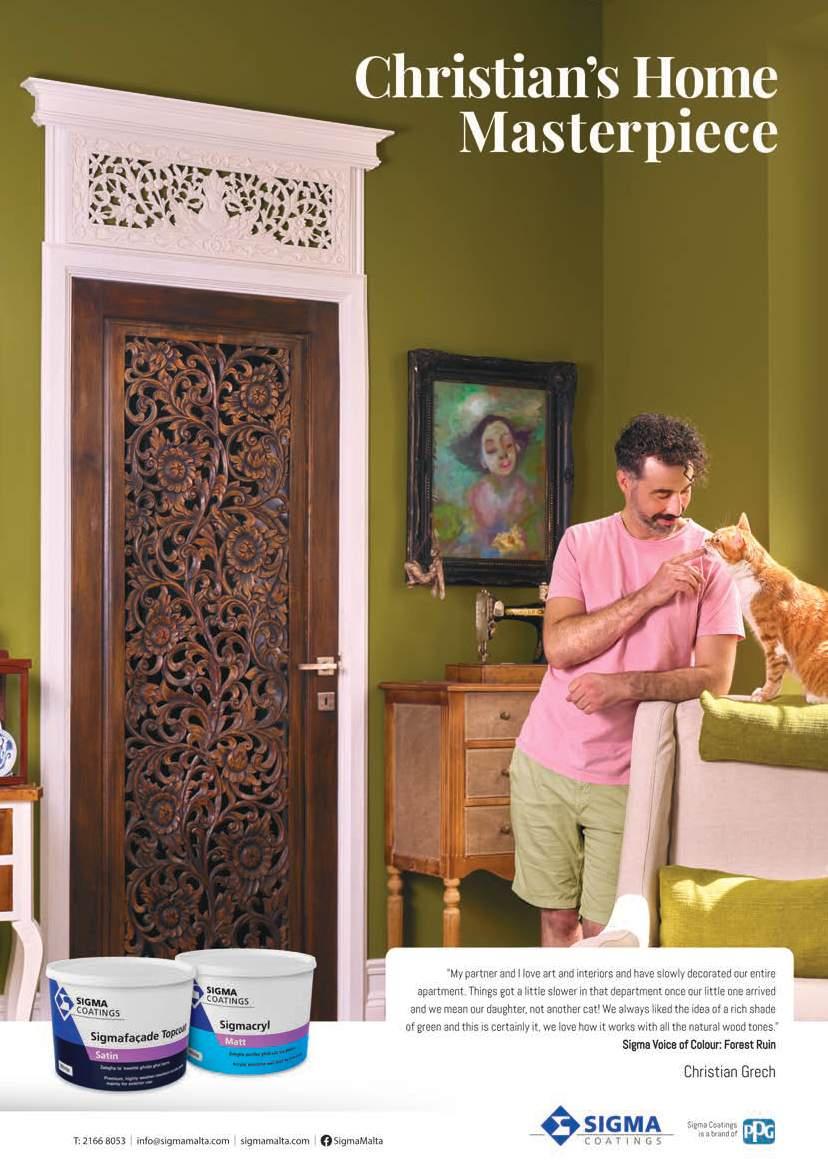

It is an endearing characteristic of our lives to give things around us human attributes. We imbue emotions, pour feelings, instil character and knit even soul into nature, animals, trees and even inanimate objects, according to our predilection and openness or conviction of how far we feel or believe we are connected and holistically part of the world with a shared consciousness; or at the bare minimum a sentient sense of mutual being, writes Kris Bonavita.
PHOTOGRAPHY COURTESY CHANEL.
Whether things in themselves have a claim to metaphysical being in their own right is beside the point. But for better or for worse we anthromorphisize the world around us. We feel connected, even a sense of communion, and are sentimental about not just other humans (and in that regard we envision a shared trajectory, destiny and power); but imbue a sense of being, justifiably to our pets, our most fond possessions, and things and places that overlap with our own sense of self; our own all too human frailty, and potency or impotence.
In this regard the world is a mirror, receptacle and reflection of our own most inner thoughts, feelings and sense of existence, and in that reflection, we identify with and construct a very personal understanding and coming into being, far beyond the shapes, colours, sounds and outward dimensionalities of the here and now. We pour our being into this worldly receptacle, but in each case, it is always an intimate encounter of the other kind, masked by a deeper sense of false belonging or an equally strong conviction of being a stranger in this land, a pale traveller even to ourselves.
And yet we fail to realize at the root of this impostor syndrome, it is rather the world itself from which we are shaped and wrought in ever shifting complexity to be entirely a product of. We are worldly, earthly and cosmically par excellence; in our constitution, modality of being and finiteness or limitations. It is we who are rather essentially anthromorphisized by the world and not the world by us.
So, when we talk of the metaphysics of things we are just admitting that objects and persons are imbued with a sense of being that for all intents and purposes is defined by observable limitations only to be
undefined by the unobservable; the only hinted at, that which is sort of understood but not really; not really Being proper in ourselves. Rather than projecting certainty into the being of things, we are as such masking a doubt in the being of ourselves. We can say that we are mere shadows of other things, a soft resilience to the tenacious resilience of stones, a mild brightening to the brilliance of stars, a slight shimmer to the facets of the moon and the sea, a frailer version of everything and anything that can be grasped and understood and even then, in small bite size glimpses of revelation, within a multitudes of doubt, shade and casting mystery.
The root cause of this existential doubt is the gnawing certainty of temporality, a finality of sorts. For the one thing that we can be certain of is the changing nature of time; a seeming decay or entropy of creative destruction. The here and now is always up for grabs regardless of how effortlessly predictive or set in stone things may causally seem to be and for the most part are. Time has a knack of being open to contingencies of any kind. In fact, time can be defined as an open contingency in its very nature and in complete contradiction or at loggerheads to all other aspects of existence; of keeping it together so to speak.
Even the least likely scenario may conjure itself up out of seemingly nowhere, even the least expected may lend itself to the present in a way that upon it being so, one can hardly fathom it being any other way. Almost as if the past itself is woven into or somewhat rewritten and recast only upon the enactment of a highly particular future that was all but unimaginable and within that setting, regardless of the mundane nature of the present that for all intents and purposes shows itself as essentially expected, blindingly obvious. Time is an adjuvant to not just crepuscular hope; an arbiter of real beauty or love; but in fear and trembling to the sudden emergence of a poetry of perfect justice.
Facing page: CHANEL ALLURE EDP. Allure: the very essence of elegance according to Gabrielle Chanel. Difficult to define, impossible to resist - this floral-fresh-ambery fragrance in 6 facets reveals itself in a unique way on every woman. A composition that combines the sparkling notes of mandarin, the sweetness of rose and the sensuality of vanilla. The floral, fruity and amber notes are magnified. Photograph courtesy CHANEL.
“Simplicity is the keynote of all true elegance.”
COCO CHANEL
CHANEL ALLURE The very definition of elegance according to Mademoiselle Chanel. Charismatic and natural. A floral-fresh-oriental fragrance in six facets that finds an expression unique to each woman. Because every woman has her own special allure. INSPIRATION Gabrielle Chanel champions the idea of a silhouette without artifices, one that asserts its style beyond fashion trends. A natural elegance that is expressed more in the way a garment is worn than in the garment itself. A certain vision of beauty, for which Mademoiselle reinvented the vocabulary with a word that speaks of movement, simplicity, and uniqueness: allure. Indefinable and utterly irresistible, ALLURE is the fragrance of a radiant, authentic woman with natural elegance, who stands out through her gaze, her presence, her grace, and her charisma. ALLURE HOMME INSPIRATION Allure reveals an individual’s personality, their way of being in the world. Singular, it cannot be defined; it is simply observed. ALLURE HOMME embodies a man who knows how to remain true to himself.
Allure is the very definition of elegance according to Mademoiselle Chanel. Effortlessly charismatic and strikingly natural in equal parts and yet highly personal; as every woman has a unique expression of her own special allure; the inspiration behind this perfume is a style that transcends trends, allure as a self evident, touchingly personal expression of beauty; at once simple but sophisticated. The whole point being, about a woman who defines herself through her gaze, her presence, her grace and charisma.
The nose behind Allure is Jacques Polge. This fresh ambery fragrance has a multitude of facets, combining in its composition sparkling mandarin, soft rose, sensual vanilla all wrapped up in a gorgeous ambery feel of refined elegance, with a delicate powdery floral long lasting trail that veers to the exotic in its intoxicating high notes of peonies and passion fruit accords.
Playful magnolia, jasmine, vetiver and lily also make their mark with a potent sillage that is wistfully and tastefully balanced.
An air of gilded decadence holds this toute femme fragrance together with sophistication. Certainly, one of the bemusingly more complex perfumes available today.
Allure Homme fragrance embodies the man with indescribable elegance, charismatic and serene, whose fragrance makes his presence known. The nose behind this scent is also Jacques Polge. Allure Homme has four towering facets starting with a green freshness peaked by sharp peppery strengths to unfold in a woody elegance of labdanum and vanilla sensuality.
This is fresh, spicy and woody in equal measure. Invigorating bergamot, lemon and ginger usher cleaner more intense notes of vetiver, cedar, patchouli, rosewood and lavender before melting into warm tones of tonka bean, anise, labdanum, jasmine and freesia, heightened by Madagascan black pepper, musk, leather, amber and oakmoss basal roots.
There is a lot happening within the confines of this at first glance tightly knit confection but the sillage and trail ensure a gradual unfolding into more precise tones and peaks. This has all the comforts of citrus inflected classical male perfumes yet with verve wood spice and fruit to give a cleaner expression, and layers of deeper complexity.
CHANEL is distributed by Alfred Gera & Sons Ltd.
Facing page: CHANEL ALLURE HOMME EDT. A fresh, spicy and woody fragrance. Its harmonious and balanced notes evoke a charismatic and determined man. The invigorating freshness of bergamot announces the frank and intense notes of vetiver. The warm notes of tonka bean and cistus labdanum, enhanced with black pepper from Madagascar, give it a sensual trail. Photograph courtesy CHANEL.
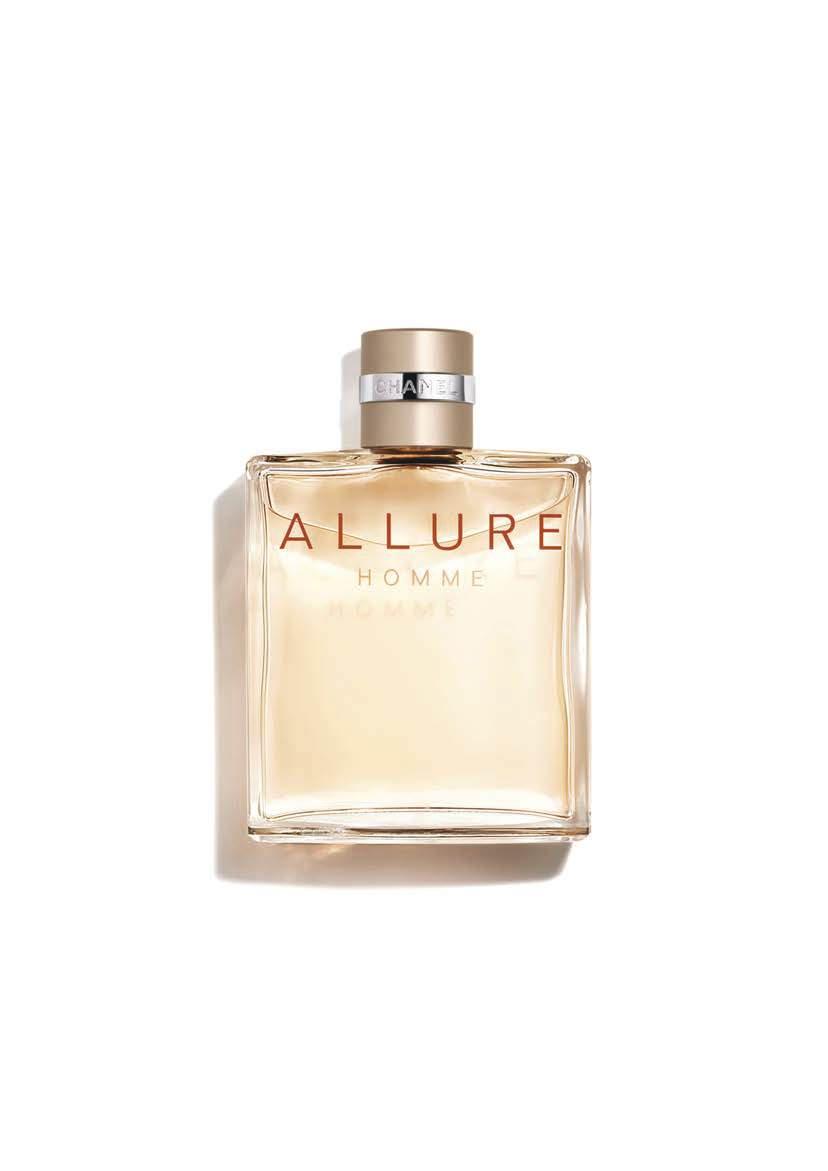
Now available from STOCK

€29,900 (inc. government scheme and inc. scrappage)

TURNING 40 –THE HERMÈS BIRKIN BAG. Celebrating its 40th anniversary, the Hermès Birkin bag is one of the most sought after luxury items. Its story began in 1980, when actress and singer Jane Birkin met Hermès CEO Jean-Louis Dumas on a Paris-to-London flight, and a chance conversation about her spilled straw bag led to the creation of the Birkin. Released in 1984, the Birkin –with its rolled handles, flap top, clou “feet”, and signature lock –has captivated collectors ever since. Meticulously crafted by a single artisan over 18 hours, the Birkin’s exclusivity, coupled with its limited availability, makes it a true symbol of elegance.
AN EXCEPTIONAL ONLINE SALE CELEBRATING A PRESTIGIOUS EUROPEAN COLLECTION, FEATURING NEARLY 200 LUXURY HANDBAGS. THE BIRKIN 40TH ANNIVERSARY: A SPECIAL SELECTION TO CELEBRATE ITS BIRTHDAY!
Christie’s presents Unlocking the Orange Dream: Handbags from an Important Private Collection, an exceptional online single-owner sale running from October 30 to November 13, 2024. Showcasing the passion of one collector, the auction offers true treasures for fashion enthusiasts and collectors alike.
Photography courtesy Christie’s Images Limited.
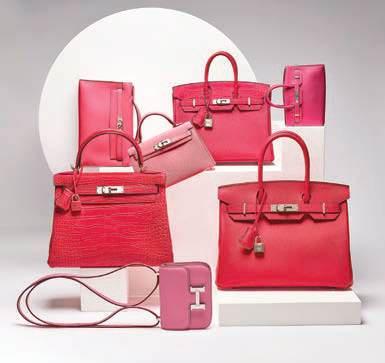

Above left: (top 4,left to right) A Rose Azalée Swift Leather Kelly Pochette, 2016, estimate €6,000-8,000; a Limited Edition Rose Confetti & Orange H Chèvre Leather Verso Mini Kelly II 20, 2022, estimate €12,000-18,000; a Limited Edition Framboise Togo & Matte Alligator Touch Birkin 25, 2021, estimate €12,000-18,000; a Limited Edition Rose Tyrien Epsom Leather Tiny Candy Birkin, 2011, estimate €10,000-15,000. (Bottom 3, left to right)A Special Order Matte Rose Extrême & Iris Alligator Retourné Kelly 28 with Brushed Palladium Hardware Hermès, 2020, estimate €22,000-28,000; a 5P Bubblegum Pink Swift Leather Tiny Constance, 2009, estimate €8,00010,000; a Special Order Rose Extrême & Lime Epsom Leather Birkin 30 with Brushed Palladium Hardware Hermès, 2020, estimate €8,000-10,000. All with Palladium Hardware, Hermès. Photography © Christie’s Images Limited. Above right: (top) A Shiny Mykonos Porosus Crocodile Birkin 35, 2013, estimate €20,000-26,000; (centre left) a Shiny Bleu Électrique Nicotilus Crocodile Constance Élan, 2012, estimate €12,000-18,000; (centre middle) a Bleu Électrique Swift Leather Kelly Cut, 2011, estimate €4,000-6,000; (centre right) a Mykonos Swift Leather Kelly Pochette, 2011, estimate €6,000-8,000; (bottom left) a Limited Edition Bleu Céleste Epsom Leather Tiny Candy Kelly, 2011, estimate €8,000-10,000; (bottom middle) a Limited Edition Shiny Cassis, Bleu Tempête & Bleu Izmir Alligator Mini Constance, 2014, estimate €15,000-20,000; (bottom right) a Special Order Matte Bleu Électrique & Vert Pelouse Alligator Retourné Kelly 25 with Brushed Palladium Hardware Hermès, 2021, estimate €22,00028,000. All with Palladium Hardware, Hermès. Photography © Christie’s Images Limited. Below: (top left) A Lime Swift Leather Constance Élan, 2011, estimate €5,000-7,000; (top right) a Limited Edition Nata Toile Goëland & Swift Leather Cargo Birkin 25, 2022, estimate €20,000-26,000; (bottom left) a Limited Edition Nata, Mauve Sylvestre, Chai & Lime Epsom Leather Kelly Doll Picto, 2022, estimate €20,000-26,000; (bottom right) a Limited Edition Nata Swift Leather In & Out Retourné Kelly 25, 2021, estimate €12,000-18,000. All with Palladium Hardware, Hermès. Photography © Christie’s Images Limited.

Unlocking the Orange Dream: Handbags from an Important Private Collection highlights a rare European private collection, carefully assembled over more than two decades. The collection, featuring nearly 200 luxury handbags, includes a diverse range of colours and models, with a strong emphasis on Hermès creations. Spanning from the late 1990s to the 2000s, it highlights Hermès’ creativity and unparalleled luxury. Notable pieces include the iconic Birkin, Kelly, and Constance models, alongside limited editions and custom orders crafted from exotic materials.
Among the standout pieces is the Birkin Nuage (estimate: €60,000-80,000) celebrated for its rare and sought-after characteristics. The collection includes Jean Paul Gautier-era collector favorites, including both the So Black Kelly (estimate: €15,000-20,000) and So Black Birkin (estimate: €20,000-30,000), famed for sleek, monochromatic elegance, as well as the Shadow Birkin (estimate: €15,000-20,000), which offers a dramatic and sophisticated look, created to look as if the Birkin was etched in stone. In addition, the collection features the whimsical Candy Collection Tiny Micro Mini Birkin and Kelly (estimate: €10,00015,000), a playful and diminutive interpretation of Hermès’ iconic designs, each piece showcasing Hermès’ innovation and creativity.
In parallel with this remarkable sale, Christie’s is offering Handbags Online: The Paris Edit, showcasing an exquisite selection of Hermès bags alongside notable items from other prestigious brands, including Chanel bags, Louis Vuitton trunks, and mini Lady Dior bags. The sale presents rare opportunities to acquire exclusive pieces and invest in exceptional, timeless models from multiple iconic brands.
PRACTICAL INFORMATION Online sale Unlocking the Orange Dream: Handbags from an Important Private Collection from October 30 to November 13, 2024. Online sale Handbags online: The Paris Edit from October 30 to November 14, 2024.


House is set to present a unique living experience in Valletta’s first newly constructed residences –a luxurious collection of apartments and a single townhouse. Designed by Martin Xuereb & Associates, the development is situated directly opposite the Prime Minister’s office at Auberge de Castille, occupying the site of the former Times of Malta printing press, a building that witnessed many pivotal moments in Maltese history. Strickland House illustrates how modern architecture, sophisticated design and thoughtful details, can harmonise with historical surroundings.
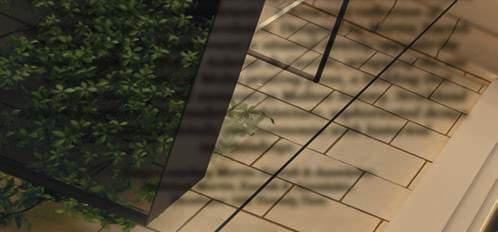




Located opposite the Auberge de Castille, Strickland House by Martin Xuereb & Associates is a new iconic building in the making. The property’s historical roots date back to 13th March 1930, when it was purchased by Lady Strickland on behalf of her stepdaughter, Mabel. Mabel relocated The Times printing press from Strada Reale (now Republic Street) to Strada San Paolo (St Paul’s Street), taking over a building that had been constructed in 1910 and used as a cigarette-making factory. The paper gained a reputation for its objective reporting while maintaining strong editorial opinions, especially under the stewardship of Strickland during the difficult years of World War II. Today, the site of this historic press has been transformed into Strickland House, occupying almost half of the block located between St Paul’s Street, Melita Street and St Ursula Street in Valletta.

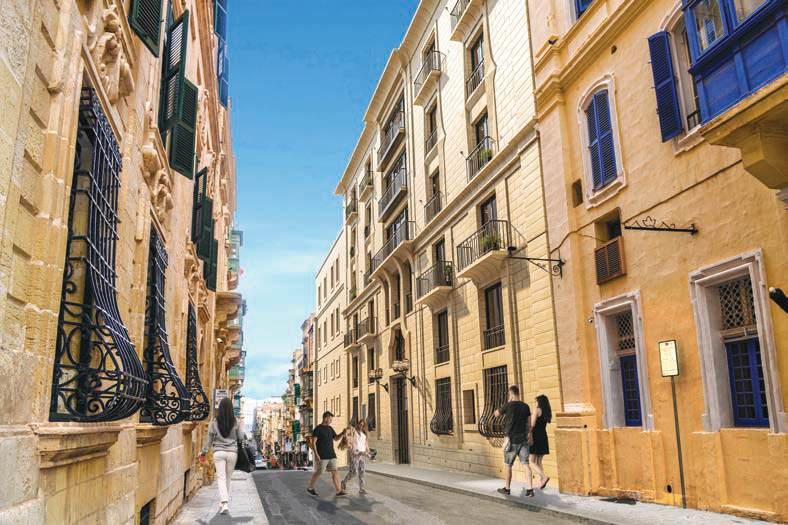

Strickland House is designed to seamlessly integrate modern engineering into Valletta’s traditional 17th-century architecture, respecting and preserving the city’s grand historical context. Renowned architect Martin Xuereb, founder of the award-winning Martin Xuereb & Associates, led the project prior to his passing and had this to say about the property: “Having lived in Valletta throughout my adolescent life, I still hold a soft spot for the area. I feel privileged to have been given the opportunity to give something back to the city through this unique development for others to enjoy too. The design of this building was extremely challenging as it not only had to reflect the high quality and standard of living which people have come to expect within a new building, but also to be finished and proportioned in an elegant, yet simple way, to blend in to the historical context of its spectacular location.”




The main entrance of the building has been designed based on a similar alignment and proportion of the old entrance into the building. Its size and proportions give it a sense of subtle grandeur, without being too imposing as compared to other palace entrances. The entrance leads to the heart of the project –a grand courtyard, modelled after the open yards found in Valletta’s palaces and historic buildings. Here, residents and guests can relax in a common space complete with a water feature and greenery.
The courtyard is a focal point of the design, with internal walkways linking the apartments across multiple levels, giving the space a sense of airiness and connection. A retractable roof will flood the area with natural light and automatically close during rain, and open in case of emergency.
The communal spaces are to be finished to the highest standard, with a blend of traditional and contemporary design elements. The reception area features a modern interpretation of a coffered ceiling with chandeliers, while the first-floor lounge overlooks the grand entrance, finished with high-end materials and furnishings.
Strickland House promises an unparalleled standard of living, combining modern luxury with Valletta’s historic charm. Residents will benefit from a concierge service located in the building’s elegant lobby. Underground parking includes 54 spaces reserved exclusively for residents, with the option to install EV charging points. The external facade of the building is to be finished in a Maltese limestone masonry blockwork with traditional moldings that have been adapted to give a contemporary design respecting the architectural importance of both Valletta as a city and complementing the surrounding streetscapes, while introducing contemporary design elements such as custom light fittings and authentic steel railings on balconies.
This page: The design incorporates different floor finishes for various areas in apartment, including full body, large format porcelain tiles with marble effect in living areas. Wooden skirting that matches the wall colour will complete the look.
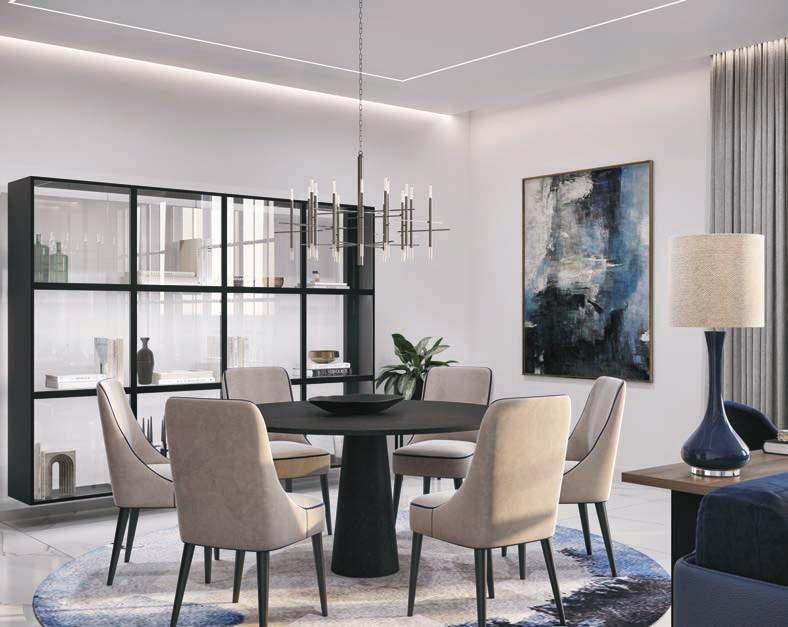

Inside, the apartments will reflect the same level of detail.
Entrance paneled doors will be crafted from timber sprayed in a matt anthracite colour and include brass lever handles. Internal solid wooden framed and flash doors are paneled and sprayed in a matt light colour complete with brass lever handles. The design concept incorporates different floor finishes for various areas in each apartment, including full body, large format porcelain tiles with marble effect in living areas and parquet flooring in bedrooms. Wooden skirting is to match wall colour, creating a sophisticated contrast.















info@faraxapublishing.com



















Bathrooms will be finished in large format porcelain tiles, the design complimented by heated towel rails, underfloor heating, chrome finish brassware and accessories, and white ceramic sanitary ware. Walk in
showers will include frameless glass screens.
In terms of climate control, air conditioning and heating will be provided by a single VRF outdoor unit installed for each apartment connected to concealed indoor units complete with linear slot

diffusers, ensuring year-round comfort. Modern lighting solutions, including LED track lights and hidden strips, as well as pendant and wall light provisions in selected areas, illuminates the space with a contemporary edge, and completes the interior design.






Sitting beside the Church of St Paul’s Shipwreck, the 18th-century Baroque Palazzo Lucia lies in a special location on Merchants Street in Valletta and is instantly recognisable by its original red corner timber balcony overlooking the busy street below. Built during the Carapecchia period between 1725 and 1735, this iconic Valletta landmark features classic elements from that era, including floral designs on the façade, generous proportions and balconies that are typical of the high Baroque style. AX Group have now transformed the stunning palazzo into a prestigious office address.
Photography Julian Vassallo, courtesy AX Group.
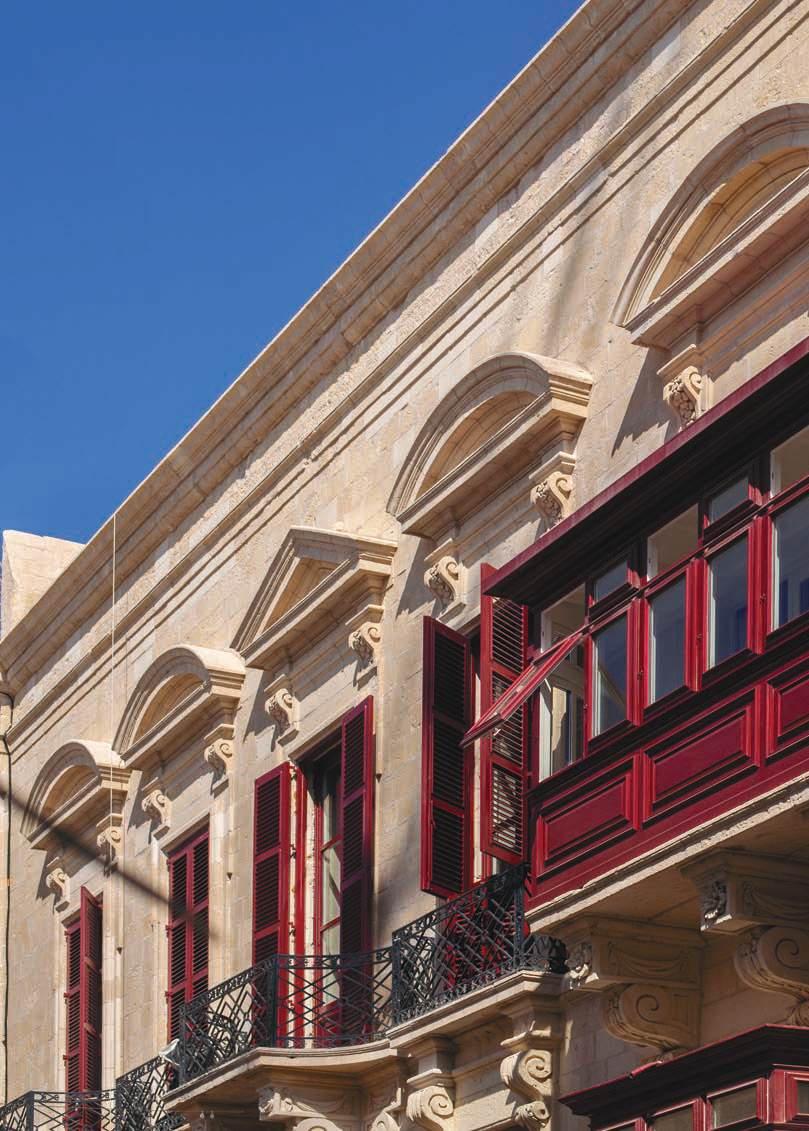


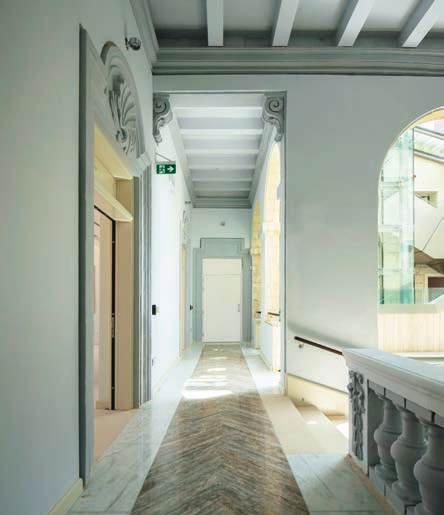

Romano Fortunato Carapecchia (1666–1738) was an Italian Baroque architect who was active in Rome, Sicily and Malta. His designs helped transform Malta’s capital Valletta into a Baroque city in the first few decades of the 18th century, and subsequently many new Baroque buildings were constructed by the Order of St. John, while some existing buildings were redecorated or given new façades.
Baroque architecture in Valletta often emphasises grandeur and scale, designed to impress and reflect the power and prestige of the Knights of St. John.Known for its elaborate decorative elements, Valletta’s Baroque buildings are adorned with intricate carvings and elaborate facades, and the use of recessed windows and doorways, pilasters, and deep cornices highlights this dynamic, giving the city’s architecture a theatrical quality.
Recently AX Group announced the stunning transformation of Palazzo Lucia, an 18th-century Baroque palazzo on Merchant’s Street in Valletta. Originally acquired in a state of neglect, this historic building has been restored into a prestigious office address, offering 1,248 square metres of luxury space that blends timeless elegance with the needs of the modern workplace. The restoration of Palazzo Lucia marks a significant milestone in AX Group’s ongoing commitment to preserving Malta’s architectural heritage.The AX Development and Construction teams, led by Group Architect James Attard and Senior Design Architect Justin Coppini, along with independent architect Philip Micallef A.& C.E., have brought life into the building through the introduction of a private office concept.




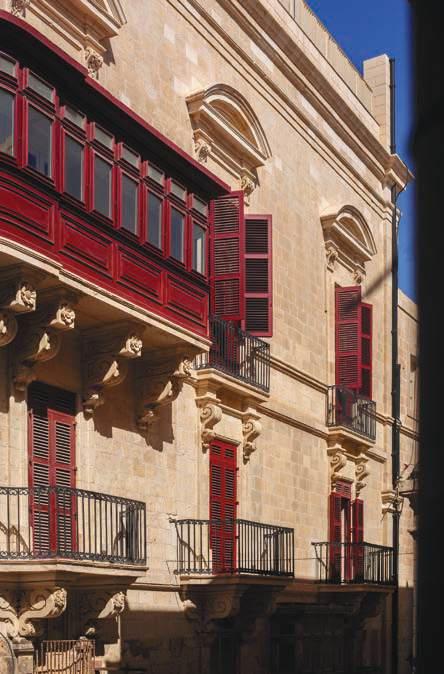

Original features, such as the intricate floral motifs scattered throughout the building, the timber coffered ceilings, original wrought iron work and the iconic curved balcony were meticulously restored.The rich architectural grammar of the Palazzo shines through sensitive and well-studied interventions required to bring the building back to life and into the 21st century.
“Transforming buildings of cultural significance is a passion that drives us,”says Denise Xuereb, Director of Construction and Development at AX Group and CEO of AX Real Estate. “Our focus goes beyond just development; we are dedicated to creating high-quality projects that respect and enhance their surroundings. At AX Group, we believe in leaving a lasting legacy, not just through the buildings we restore but also by reintegrating them as vibrant parts of their communities.
Palazzo Lucia is another milestone in our ongoing journey to blend the past with the present, ensuring these spaces continue to serve and inspire future generations.”
The transformationrespects and helps to preserve Malta’s rich architectural legacy while addressing the needs of modern businesses.Now home to 18 fully serviced offices, the new tenants enjoy a comprehensive suite of amenities, including meeting areas, a boardroom with advanced video conferencing, and a stunning rooftop terrace with panoramic views over Valletta and the Grand Harbour.
The central courtyard, enhanced with a panoramic lift and ventilated glass ceiling, allows natural light to flood the space, creating a bright, welcoming environment that seamlessly blends with the palazzo’s historic context.


An Exhibition By Barnaby Barford
22nd Oct 2024 - 19th Jan 2025
Muża - The National Community Art Museum
NATIONAL MUSEUM OF ARCHAEOLOGY, AUBERGE DE PROVENÇE, VALLETTA

Knights from the langue of Provençe. A visit to this museum offers more than just a glimpse into Malta’s rich archaeological history – it also reveals the grandeur of the Gran Salon, an upper-floor hall adorned with stunning decorative elements dating back to the early 1800s. In 2017, Heritage Malta, with the support of Bank of Valletta, initiated a significant conservation project for the Gran Salon. During the restoration work, a hidden painting was uncovered behind a blocked arch – an image of Neptune, the Roman god of the sea. This rare discovery shed new light on the original 16thcentury decorative scheme, which had been largely obscured during the British period.
Photography courtesy Heritage Malta.



With its collection ranging from Malta’s Neolithic period (5900–2500 BC) to the early Phoenician period (8th–6th century BC), the National Museum of Archaeology houses iconic pieces like The Sleeping Lady, The Venus of Malta, and the colossal statue from Ħal Tarxien Prehistoric Complex. In addition to the museum’s unique artefacts, the Gran Salon on the upper floor enhances
the building with its captivating features. The Gran Salon, with its rich detailing and impressive wooden beamed ceiling, was originally used by the Knights of St. John for their business discussions, as a refectory and also as a banqueting hall. Today, it stands as one of the few remaining examples of Malta’s 16th-century timber roofs. It has one of the only five wooden trussed roofs still surviving from the Knight’s period and the mural decorations found within this hall are also unique on the island. The hall’s historical significance and aesthetic splendour make it
a true highlight of the museum.
In 2017, Heritage Malta launched an extensive restoration project, supported by Bank of Valletta, to address the conservation issues the Gran Salon had suffered over the centuries. Four hundred years of wear had left the murals and the timber roof vulnerable to some structural decay and surface damage. The primary goal of the project was not only to restore the aesthetic beauty of the hall but also to safeguard the architectural integrity of one of Valletta’s best preserved auberges.





Throughout the restoration process, scientific analyses helped the Heritage Malta team understand the historical layering of the murals, which date back to the 18th century. This knowledge allowed the team to conserve them while maintaining the hall’s original grandeur.
In 2021, as part of the restoration efforts,
conservators made a remarkable discovery–that of a blocked arch within the walls of the Gran Salon. Historical research suggested that two fireplaces, likely introduced by the British in the 19th century, had been covered up in later times. While removing part of the pointing of the blocked-off access, the restorers witnessed decorative elements completely different from the current decorative scheme of the Gran Salon.
A small section of the arch was carefully

opened, and the conservators were stunned to find a painting that had been hidden for centuries – a depiction of Neptune, the Roman god of the sea, holding a trident. Remarkably, the image, although partially covered in soot, was relatively intact.
The discovery was a momentous one for Heritage Malta and the conservation team. After discussions with experts and the Superintendence of Cultural Heritage, the decision was made to continue unblocking the archway to reveal the painting in its entirety.
Now fully revealed, Neptune is seated in the centre of a large seashell, resting his left hand on a jar with flowing water whilst holding the trident in his right hand. His green hue suggests a possible artistic attempt to mimic bronze statues. As part of the decorative scheme there are also some architectural features among other shells and fish. This painting was likely part of a larger decorative scheme dating back to the late 17th or early 18th century, predating the current embellishments added in the 19th century, and to date, is the only surviving piece of the original decorative scheme of the Gran Salon, offering a rare glimpse into its past.
While much of the original décor was either removed or obscured during the British period, the rediscovery of Neptune provides a unique link to the building’s Knight-era past, preserving a piece of history that had long been forgotten.

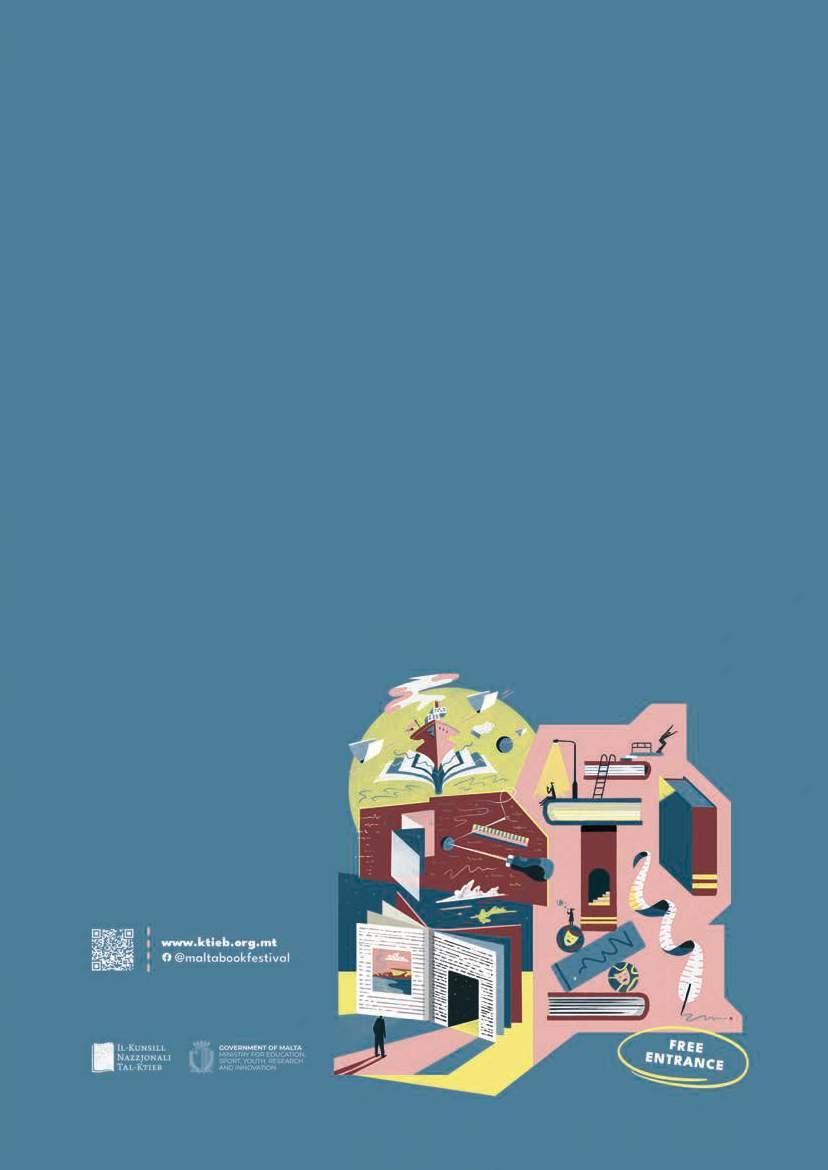



“As we get older, we tend to become more risk averse because we tend to find reasons why things won’t work. When you are a kid, you think everything is possible, and I think with creativity it is so important to keep that naivety.”
HESTON BLUMENTHAL



Heston Blumenthal’s pioneering approach to modern cuisine, has transformed The Fat Duck into a world-class dining destination since its opening in 1995. Situated in Bray, Berkshire, this 16th-century venue has evolved from a humble French bistro to a groundbreaking restaurant, known for its daring culinary techniques like multi-sensory cooking, food pairing, and flavour encapsulation. Blumenthal’s innovative dishes, such as Caviar and White Chocolate, and Egg & Bacon Ice Cream, challenge conventional ideas of dining, while his creations like triple-cooked chips have been widely imitated. The Fat Duck’s remarkable precision and innovation have earned it three Michelin stars and the title of the world’s best restaurant in 2005. With his passion for culinary exploration, Blumenthal has elevated
The Fat Duck into one of the most influential restaurants of our time.
Photography courtesy The Fat Duck.


Heston Blumenthal’s journey to culinary greatness has been anything but conventional.
Born in Shepherd’s Bush, London, in 1966, Blumenthal had no formal training. His fascination with food began during a family holiday to France at the age of 16, when he dined at the renowned three-Michelinstarred L’Oustau de Baumanière in Provence. That meal, full of theatre and
multi-sensory wonder, ignited his passion for cooking and sparked an interest in how food could evoke strong emotions through its combination of taste, smell, and presentation.
Blumenthal spent the next decade teaching himself to cook, inspired by French cuisine and the ground-breaking scientific work On Food and Cooking by Harold McGee. McGee’s research encouraged Blumenthal to question the conventional rules of the
kitchen and explore the science and psychology behind what we eat.
Even before opening a restaurant, he had already developed a revolutionary technique, Triple-cooked Chips, which has become a common feature on menus worldwide. In 1995 he bought a disreputable pub in Bray and opened it as The Fat Duck. The restaurant began as a French bistro but quickly became a place where his creative energy flourished.
page: In 1995 Blumenthal opened The Fat Duck
Bray. By 1999, the restaurant had earned its first Michelin star, and in 2004its third, making it one of the fastest to earn three stars. Above: Inside the Fat Duck. Right: Born in Shepherd’s Bush, London, in 1966, Blumenthal had no formal training. His fascination with food began during a family holiday to France at the age of 16, when he dined at the renowned three-Michelin-starred L’Oustau de Baumanière in Provence.

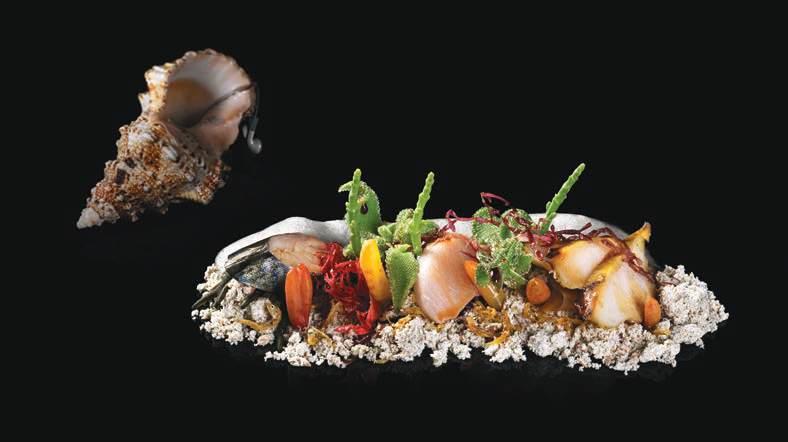
The Fat Duck became a stage for pioneering creations, many of which pushed the boundaries of traditional cooking methods. Dishes like Jelly of Quail, in which Heston employed the then little-known technique of ice filtration, and Caviar and White Chocolate, which
introduced the world to the concept of Flavour Pairing, set The Fat Duck apart. Here Nitro-poached Green Tea and Lime Mousse was the first dish using liquid nitrogen to be served in a restaurant.
Heston championed sous-vide cookery in dishes like Roast Foie Gras. Other dishes, such as Egg & Bacon Ice Cream, were simply ground-breaking creations that extended the
culinary repertoire. His recipe for Crab Ice Cream developed the concept of multisensory perception in cooking. By 1999, the restaurant had earned its first Michelin star, and just five years later, it achieved its third, making it one of the fastest to earn three stars. In 2005, it was named the best restaurant in the world by The World’s 50 Best Restaurants

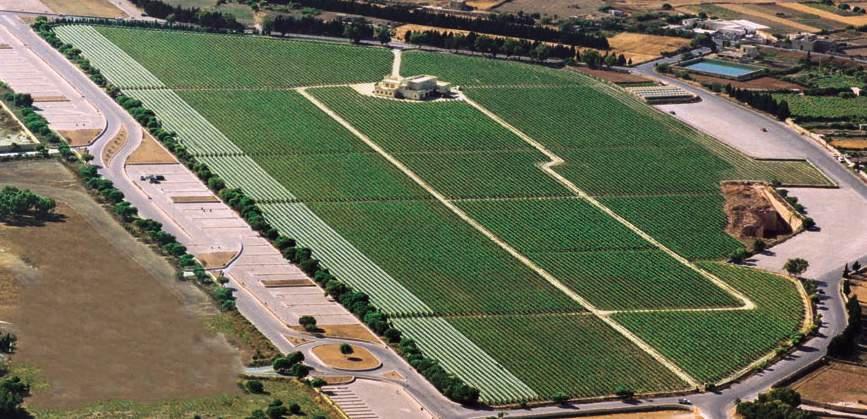





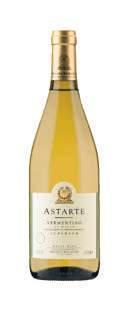



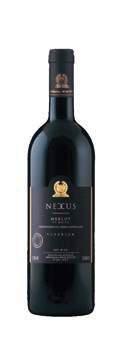


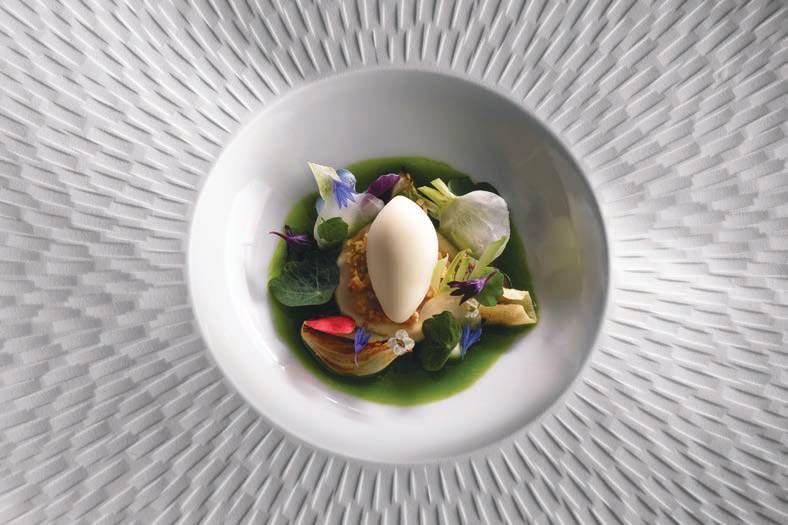
Blumenthal’s interest in the sensory aspects of food evolved into a core philosophy of multi-sensory cooking. This approach led to the creation of unique dining experiences designed to evoke memories and emotions. “My exploration of multi-sensory dining eventually inspired another landmark Fat Duck dish, Sound of the Sea:
seafood and vegetation composed to look like the sea lapping up against the shore, sitting on a shadowbox filled with real sand, and served with an iPod and earbuds playing the sound of waves. This dish had an incredible impact, because it nudged you. It didn’t tell you what to think or feel. It asked a question –which seaside memory does this take you to? The dish was a game changer,” says Blumenthal, illustrating the depth of his approach to food as a trigger for emotion and memory.


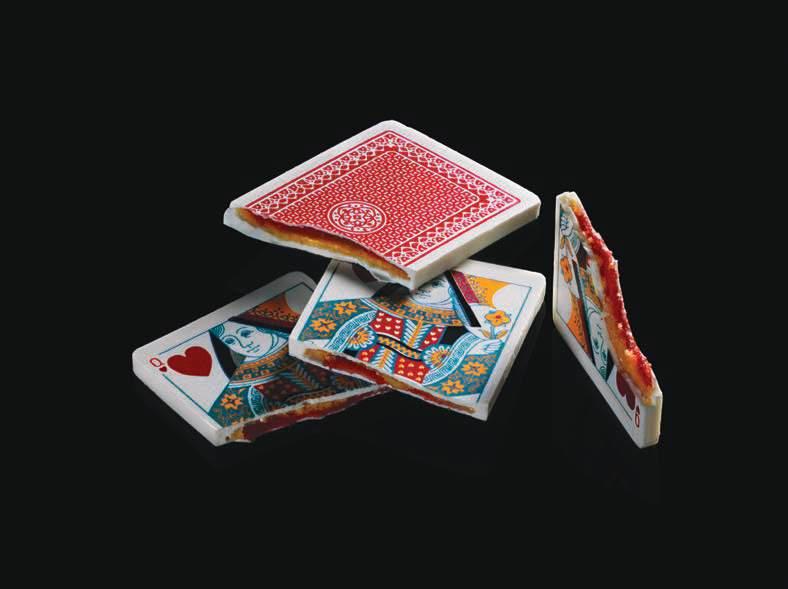


Blumenthal believes that our relationship with food is deeply connected to our memories. “The pleasure we get from eating comes from our brain, and particularly from our memories and the emotions they trigger,”he says. This idea drives many of his dishes, which seek to transport diners back to childhood memories or specific moments in time. His playful creations, such as Egg & Bacon Ice Cream and Mock Turtle Soup, based on Alice’s Adventures in Wonderland, are designed not only to satisfy the palate but also to challenge perceptions and evoke a sense of wonder.
The Fat Duck has continued to innovate, using cuttingedge techniques and ingredients like gellan gum, which allows for the serving of Hot and Iced Tea, which is a different temperature depending on which side of the cup you sip it from, and Botrytis Cinerea, a dish that captures the incredibly complex flavour profile of Château d’Yquem.

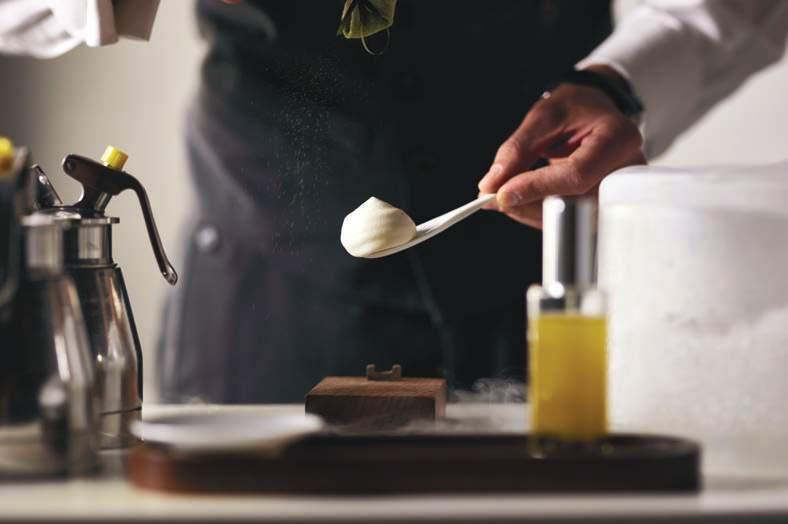

“Our relationship with food is so intertwined with our nostalgia that a trigger (albeit a very personal one) can transport us to a place of culinary wonderment. And that’s where we want to take people.”Quite literally, The Fat Duck is not just a place to eat; it’s an immersive experience, and menus, titled The Journey, The Trip and Topsy-Turvy Tasting deliver a multi-course adventure, where each dish is crafted to evoke specific emotions, memories, and sensations.
Beyond the success of The Fat Duck, Blumenthal has left a huge mark on the culinary world. His other restaurants, including Dinner by Heston Blumenthal in London and Dubai, push the boundaries of traditional dining. He’s also a prolific author and television presenter, having hosted shows like In Search of Perfection and Heston’s Fantastical Food, where he explores the science behind cooking and the history of various dishes.
Blumenthal’s influence extends beyond the kitchen. He has worked closely with scientists and psychologists to further his understanding of how food affects our emotions and perceptions. His work has redefined what it means to dine, inspiring chefs worldwide to see food as more than just sustenance, but as an experience that engages all the senses.
*Terms and conditions for the USDXtra apply and are available from all Lombard

at
Capital Guaranteed
No fees or charges

around sustainability becomes more pressing, our relationship with food is increasingly in focus. In Malta, where small size and limited arable land have always made food imports a necessity, supporting local farmers and producers offers a meaningful way to reduce the carbon footprint tied to long-distance transportation. Opting for locally grown produce not only reduces environmental impact but also sustains the livelihoods of those cultivating the land, helping preserve the island’s agricultural traditions.
Photography Christian Seebeck. Marsaxlokk, Malta.

One of the easiest ways to support local farmers is with seasonal eating. Eating produce that is naturally available during certain times of the year reduces the need for energy-intensive cultivation methods and cuts down on the reliance on imports. Seasonal food is also fresher and more nutritious, since it doesn’t need to travel long distances before reaching you. Luckily Malta’s warm climate provides a diverse variety of fruits and vegetables throughout the year, and a seasonal diet can mean enjoying fresher, tastier food while simultaneously reducing environmental impact.
Malta’s traditional Mediterranean diet aligns with sustainable eating –a diet, based on plant-based foods, fresh vegetables, legumes, olive oil, and fish, is not only nutritious but also environmentally friendly. By centring meals around locally grown produce and seafood, the Mediterranean diet is naturally low in resource-intensive animal products like red meat. The focus on fish, especially on species abundant in the surrounding waters, helps reduce environmental impact. Additionally, legumes such as broad beans, which are staples in Maltese cuisine, provide a sustainable source of protein


while enriching the soil.
Supporting local farmers and eating seasonal, Mediterranean-based foods also encourages biodiversity. Growing and consuming a variety of crops, rather than relying on imported monocultures helps maintain the health of the island’s ecosystems.
Choosing sustainable food practices also strengthens the connection between you and the producer – and this is ultimately part of the heritage of Malta. Farmers’ markets, farm shops, and even local grocers provide opportunities to engage directly with those who produce food. Eating locally and seasonally is often more cost-effective, as seasonal produce tends to be more abundant and affordable when it is in its natural growing cycle.
Incorporating these ideas into our daily lives doesn’t have to be difficult. Whether it’s visiting a local market, supporting small-scale farmers, or simply choosing dishes that are seasonal, every small effort can make a difference. Globally the need to protect and promote local agriculture, and to protect biodiversity, will only grow, and by making mindful choices about where our food comes from and when we eat it, we contribute to a healthier world and a more sustainable way of life.


With environmental concerns on the rise, green architecture is a leading trend – globally architects are designing creating eco-friendly buildings that are not only beautiful but also energy-efficient.
Locally, hot summers, damp winters, and a growing emphasis on the need to preserve natural resources make Malta ideal for green architecture.
Green architecture aims to reduce the environmental impact of buildings using energy-efficient designs, renewable resources, and sustainable materials. Key methods include utilising solar power, ecofriendly materials, and water conservation techniques. In Malta, where hot summers present unique challenges, green architecture offers practical solutions to these environmental concerns.
One stand-out and visually appealing feature of green architecture is the use of green roofs and living walls, which improve energy efficiency by insulating buildings naturally. In Malta, they can help reduce the need for air conditioning by keeping interiors cool during the summer, while offering added insulation during colder months, reducing heating costs. Green roofs also aid in water management by capturing rainwater and minimising runoff. Living walls – and creepers –serve similar purposes but on a smaller scale and can be more adaptable for various types of buildings.
Solar power is a go-to energy solution for green architecture, and in Malta, abundant sunshine makes it an ideal renewable resource. Solar panels can be easily integrated into both new and existing homes to generate clean energy and the Maltese government provides incentives for installing photovoltaic panels. By adopting solar technology, individuals can reduce their reliance on non-renewable energy sources, lower their carbon footprint, and enjoy long-term savings on energy bills.
Energy efficiency is central to green architecture’s philosophy. In Malta, where many buildings are poorly insulated, upgrading homes with modern insulation solutions can drastically reduce energy
consumption. Proper insulation, along with well-ventilated spaces and airtight windows, helps maintain cooler temperatures in summer and retain heat during winter, minimising the need for artificial cooling and heating.
Another approach, passive solar design, uses the sun’s position and natural airflow to regulate indoor temperatures. By strategically placing windows, shading, and thermal mass, architects can control sunlight exposure throughout the year, further reducing the energy demands of a building.
Sustainable design also often attempts to make better use of water management by integrating rainwater harvesting and greywater recycling to reduce water usage. Captured rainwater can be repurposed for irrigation, washing or toilet flushing. On a larger scale, urban developments can incorporate green spaces and permeable pavements to absorb rainwater.
Using sustainable building materials is also essential for minimising the environmental impact of construction. Local materials like traditional limestone, which has been used for centuries and aligns with the island’s architectural heritage, requires minimal energy for extraction, and when used in its raw or minimally processed state (like for building blocks), has a relatively low environmental impact.
Green architecture offers solutions not only for new buildings but also for retrofitting existing homes. While incorporating sustainable practices can seem challenging in Maltese houses that are decades or even centuries old, small changes, such as adding solar panels or installing energy-efficient windows, can make a significant difference.
Green architecture is not just a trend – it’s an essential part of addressing climate change, and improving quality of life.






carbon emissions and combat climate change. While EVs have been around for decades, technological advancements and growing environmental awareness have finally propelled them into the mainstream, and the transition to electric is becoming increasingly important in the push to reduce carbon emissions and adopt greener lifestyles.


One of the main reasons behind the shift towards EVs is their potential to significantly reduce greenhouse gas emissions. Unlike petrol or diesel cars, electric vehicles have no tailpipe emissions. For a small country like Malta the switch to EVs could deliver immediate benefits by cutting down harmful pollutants such as nitrogen oxides and particulate matter.
There are also practical benefits to going electric. Electric cars generally have lower running costs than conventional vehicles, as electricity is cheaper than petrol or diesel. Governments across Europe, including Malta, offer financial incentives to encourage EV adoption. The Maltese government, for example, provides grants and tax breaks, making the initial purchase of an electric car more affordable. Additionally, the growing network of charging stations across the country is making it easier for people to own and use EVs.
One concern that remains for potential EV buyers is range anxiety – the fear of running out of battery power without access to a charging station. While earlier models had limited ranges, modern EVs can cover over 300 kilometres on a single charge, which is more than enough for daily – and sometimes even weekly –driving in Malta. The availability of public charging stations is increasing, and chargers can be installed at home, making it even more convenient to charge an electric vehicle overnight or over a short time.
If you are considering going electric, it’s essential to assess your driving habits and your available charging infrastructure. Different EV models offer different ranges, features, and price points, and while the initial cost of an electric vehicle may be higher than a traditional car, lower running costs, government incentives, and the environmental benefits make EVs a good choice in the long term. By switching to electric you can contribute to cleaner air quality and reducing your carbon footprint in general.
Photography this page JUICE.





Breast cancer screening awareness is a crucial aspect of women’s health, especially in the context of Breast Cancer Awareness Month, observed every October. The earlier breast cancer is detected, the better the chances of successful treatment, often with less aggressive interventions.
Mammograms and breast self-exams are vital for identifying cancer early, and increased awareness and participation in screening programmes can potentially save lives, encouraging individuals to be proactive in their breast health. Early detection often allows treatment when cancer is smaller and more localised, reducing the need for intensive procedures.
Photography Pawel Szvmanski.


This year, the focus is on the theme “No-one should face breast cancer alone,” emphasising community support in the fight against the disease. The power of collective action cannot be underestimated. Breast cancer is a very personal journey, but it is one that can be lightened with the support of friends, family,
women become familiar with how their breasts typically look and feel, making it easier to notice any changes. However, it’s not necessary to stick to a formal, step-by-step exam each time. What matters most is becoming familiar with your body and recognising when something feels off. Many experts now advocate for breast selfawareness, which is more flexible and allows individuals to detect changes in a way that feels comfortable for them. THE POWER OF EARLY DETECTION

and healthcare professionals. Raising awareness highlights the importance of early detection and also encourages solidarity with those affected by breast cancer. The availability of support systems plays a crucial role in helping patients work through their diagnosis, treatment, and recovery.
Self-awareness is key to early detection. Breastcancer.org highlights the importance of regular breast self-exams as a way to check for any unusual changes. This practice helps


If you do notice changes in your breasts, it’s important not to panic. Lumps or other changes don’t always indicate cancer, as many women naturally have lumpy areas in their breasts. Hormonal fluctuations or benign conditions can cause lumps that are not cancerous. However, if a new lump or change persists for more than one menstrual cycle or seems to grow, it’s essential to consult a doctor. Early intervention is key, and your healthcare provider can recommend further testing if necessary. Whether it’s an ultrasound, mammogram, or biopsy, these evaluations are critical in determining the nature of the lump or change.
For many women, the fear of breast selfexams or mammograms can be a barrier. Addressing this fear by speaking to healthcare professionals and seeking support from friends or loved ones can make the process less intimidating. Overcoming this anxiety is vital, as regular screenings are a proactive step toward safeguarding one’s health. Breast Cancer Awareness Month serves as an important reminder that early detection offers the best possible outcome for patients and that support is available for those who find screening daunting.
By maintaining breast self-awareness, attending regular screenings, and seeking support from healthcare professionals, women can take charge of their breast health. While breast cancer remains a challenge, advancements in screening and treatment offer hope. With early detection and support, the road to recovery becomes much smoother. Breast cancer awareness, education, and solidarity will always play important roles in this, ensuring that no one has to face it alone.

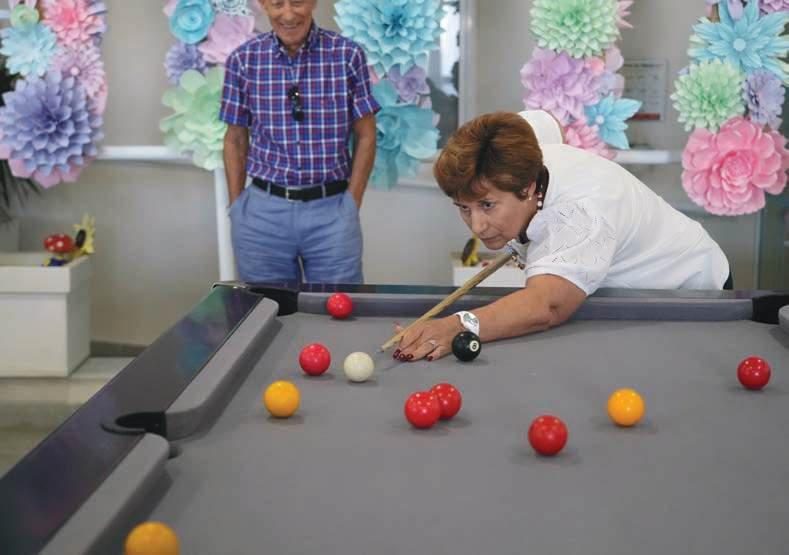

Active ageing, a concept promoted by the World Health Organization (WHO), emphasizes the optimization of opportunities for health, participation, and security to enhance the quality of life as people age. One crucial aspect of active ageing is mental well-being, which encompasses cognitive function, emotional health, and social connectedness, writes the team at Active Ageing & Community Care. This article explores the relationship between active ageing and mental well-being, highlighting strategies to promote a fulfilling and healthy older age.
Growing older doesn't mean slowing down, nor is it a time to focus solely on the absence of disease. It is not enough to extend years, but it is imperative to have a good quality of life. Growing older is an opportunity to embrace new adventures, forge meaningful connections, and nurture a vibrant, healthy mind. Active ageing is about staying engaged in life, pursuing passions, and maintaining mental wellbeing. Older adults can remain active and productive members of society regardless of their physical limitations.
Active ageing is all about making the most of life at any age. It means staying involved in activities that bring joy, whether it's gardening, painting, volunteering, or traveling. The key is to keep moving, learning, and connecting with others.
Mental well-being is a cornerstone of active ageing. It’s about feeling good, functioning well, and having a sense of purpose. A healthy mind can lead to a happier, more fulfilling life. Here are the key components:
COGNITIVE HEALTH: Keeping the brain active with new challenges and learning opportunities.
EMOTIONAL HEALTH: Finding joy, managing stress, and maintaining a positive outlook.
SOCIAL CONNECTIONS: Building and nurturing relationships that provide support and happiness.
Several factors influence mental well-being in older adults, however there are some fun strategies that boost the physical and mental well-being.
1 PHYSICAL HEALTH: Regular exercise, like walking, swimming, or yoga, not only keeps the body fit by reducing the risk of chronic diseases, but also boosts mood and cognitive function.
2 SOCIAL SUPPORT: Strong relationships with family, friends, and community members provide emotional support and reduce feelings of loneliness. Join clubs, volunteer, or simply meet friends for a coffee. Engaging with others is vital for mental well-being.
3 LIFELONG LEARNING: Engaging in new hobbies, taking classes, or even learning to use new technology keeps the mind sharp and curious. Puzzles, reading, learning new skills, or even playing a musical instrument can keep your brain active and engaged.
4 ECONOMIC STABILITY: Feeling secure about finances can reduce stressand allow older adults to engage in activities that promote well-being. It is important to plan ahead for retirement and also learn to budget well. There are several online resources as well as classes to help with financial literacy.
5 ACCESS TO HEALTH SERVICES: Regular health check-ups and mental health services can help manage and prevent both physical and mental health issues.
6 HEALTHY LIFESTYLE CHOICES: Advocate for a balanced diet, adequate sleep, and stress management techniques to support overall well-being.
7 ACCESSIBILITY AND INCLUSIVITY: Ensure that communities are designed to be age-friendly, with accessible public spaces and services.
8 CREATE AN AGE-FRIENDLY ENVIRONMENT: Ensure your home and community are accessible and welcoming, making it easier to stay active and involved.
Sometimes certain circumstances pose challenges which are difficult to overcome alone. Situations such as bereavement, diseases, chronic pain, anxiety and depression may take a toll on the physical and mental wellbeing of an individual. But remember help is available!
Active Ageing and Community Care offers numerous services in the community, including medical care and rehabilitation, social work services, and psychological support services. Moreover, the Active Ageing and Community Care offers the service of Active Ageing Centres which provide opportunities to meet others, engage in physical and cognitive activities, and participate in several learning programmes. These centres offer opportunities to socialise and have fun.
Active ageing is a delightful journey filled with opportunities to stay engaged, learn new things, and connect with others. By focusing on mental well-being, we can enjoy a vibrant, happy life at any age. So, let’s celebrate ageing with positivity, embrace new experiences, and cherish every moment. After all, life is a beautiful adventure at every stage!
Further information may be sought from the Active Ageing and Community Care website: aacc.gov.mt or by phone on 22788900 or from Servizz.gov on Freephone 153 extension 12.





October brings attention to both the International Day of Older Persons and World Mental Health Day. It's a perfect opportunity to reflect on the well-being of our seniors and to promote the importance of taking care of our mental health, writes Renata Zahra, Home Manager at Casal Nuovo, HILA.
Ageing is an inescapable part of life that brings new opportunities, as well as challenges in life which may have an impact on our physical and mental health. When it comes to mental health issues, it is not a normal process of ageing as it can affect anyone. However, with age comes a greater risk for exposure to mental health issues and therefore it is crucial to understand the relationship between ageing and mental health while ensuring a filled quality of life for an older person. Older people may have coping or support mechanisms that may prevent the effects of mental health disorders, however, there is always a risk of breaking point.
One of the most life-changing aspects that may cause a decline in our mental health is retirement, which most of us take for granted and ignore. Such a life transition can lead to loneliness, social isolation, and the feeling of being worthless, which can have a negative impact on a person’s mental health and well-being.
Unfortunately, in today’s world, many stigmas exist, and the older population is not likely to acknowledge the struggle and may view mental illness as a sign of weakness or being in denial.
Such taboos often keep an older person from seeking proper help or any help at all. Without seeking early help, mental health problems can have a high impact on an older person’s ability to carry out basic daily living activities which may affect physical health and quality of life. Declines in physical health, such as pain and loss of mobility play along with our emotional health, which may lead to feelings of helplessness and sadness, anxiety, depression, and self-exclusion from social life activities. In addition, another concern comes when an older person is having trouble with cognitive abilities such as loss of memory. This can cause even more frustration, anxiety, and fear of losing independence.

It is important to take care of our mental health as it may affect how we think and feel, and how we are coping with life’s ups and downs. As we move through different stages of life and because of various circumstances that life brings to us, our mental health can be affected.
Increased awareness of mental health signs and problems among families and caregivers of older persons can help identify rising issues at an early stage and encourage them to seek help. The right supportive environments provide safety and reassurance to an older adult. Taking care of our mental health and physical issues in old age is crucial as it can help one to lead fulfilling and happy lives.
bestselling classic cocktails at the world’s best bars for 2024. The Drinks International Cocktail Report highlights: “Light and bright, low-ABV, and instantly recognisable –not to mention highly Instagrammable –the Aperol Spritz took the world by storm about a decade ago. It aligned perfectly with trends like moderation and the desire for lighter flavours, which remain just as popular today.”
Photography Victoria Shes.




The drink's key ingredient was crafted by brothers Luigi and Silvio Barbieri, first unveiled at the Padua International Fair in 1919. Its nowiconic recipe –three parts prosecco, two parts Aperol, and one part soda –was established later, in the 1950s, according to the brand. But the spritz concept predates this, and just as it provided the ideal foundation for the Aperol Spritz, it has inspired variations using other ingredients, such as Campari or Limoncello. The Hugo, a mid-2000s creation by bartender Roland Gruber, takes it further by originally combining prosecco, soda, and mint with lemon balm syrup – though nowadays, elderflower syrup is a popular alternative.

APEROL SPRITZ OFFICIAL RECIPE APPROVED BY IBA AND DON’T FORGET THE ORANGE INSIDE THE GLASS
Making the perfect Aperol Spritz is as easy as 3-2-1. That’s a ratio of 3 parts Prosecco, 2 parts Aperol, 1 part soda water. If you’re measuring, that’s 90ml Prosecco, 60ml Aperol, 30ml soda. If you’re not measuring, just pour and judge by the colour.
Aperol Spritz is best served with ice, in a large wine glass, garnished with a slice of orange, in good company.
3 parts of Prosecco DOC (9cl)
2 parts of Aperol (6cl)
1 splash of soda (3cl)
1 slide of orange
Place ice cubes in a stemmed balloon glass. Pour 3 parts of Prosecco DOC. Follow by pouring 2 parts of Aperol, and 1 ounce of soda. Slice an orange and use it as a garnish.


